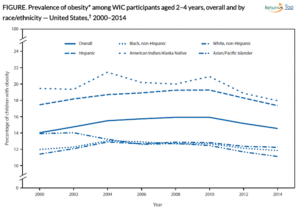Once again, Congress—under pressure from lobbyists—is micromanaging USDA’s food assistance programs.
This time it’s the WIC program (Special Supplemental Program for Women, Infants, and Children).
The lobbying is coming from the National Potato Council, which wants—no surprise—white potatoes to be included the list of foods approved for purchase with WIC benefits (the “WIC Package”).
I love potatoes but they don’t need to be in WIC.
Here’s what this is about.
The WIC Food Package
This is designed to meet the special nutritional needs of at-risk low-income pregnant, breastfeeding, non-breastfeeding postpartum women, infants and children up to five years of age. Rules published in the Federal Register in 2007 aimed to promote long-term breastfeeding by providing WIC participants with a wider variety of foods including fruits and vegetables and whole grains (see summary here).
Although the rules allow states considerable flexibility, they specifically exclude white potatoes.
The New York State WIC package, for example, allows any variety of fresh vegetables and fruits except white potatoes (sweet potatoes and yams are allowed).
These rules are the result of an Institute of Medicine study released in 2005. This study found that WIC participants already ate plenty of white potatoes. The report said it would be better for WIC to encourage consumption of a wider variety of vegetables.
Potato industry lobbying
For the last five years, the potato industry has been lobbying to include white potatoes in the WIC package.
Potato lobbyists are active these days.
For example, the Maine potato lobby succeeded in getting Congress to tell the USDA that it could not set any limits on the number of times per week that white potatoes could be served in school lunches. That ploy worked and this one may work too.
The National Potato Council lobbyists induced Congress to add a clause to the 2014 omnibus appropriations bill. When President Obama signed that bill on January 17, he directed the USDA to allow all varieties of fresh, whole, or cut vegetables to be included. Translation: white potatoes, and French fries at that.
If the USDA fails to comply, Agriculture Secretary Tom Vilsack must submit a report to Congress explaining why not.
The National Potato Council makes this statement: “This action sends a clear message to USDA that it is obligated to base its nutritional policy on the latest nutritional science, which calls for an increase in starchy vegetable consumption for all Americans, including WIC mothers and children.”
It does? I’m not aware of such science.
The Institute of Medicine is currently reviewing the WIC package and I seriously doubt that it will find a deficiency of starchy vegetables in American diets.
This is about getting potato growers a chunk of taxpayer money spent for the WIC program.
Why should anyone care?
If Congress caves in on white potatoes, it will open a Pandora’s box of pressures from lobbyists representing every food product currently excluded from the WIC package.
If lobbyists for white potatoes succeed, can those for “fruit”-flavored cereals and sports drinks be far behind?
The WIC program has always focused on encouraging recipients to consume foods that will best promote their own health and that of their children.
It would be better for WIC recipients—and a lot better for American democracy—if the potato industry stopped manipulating Congress and interfering with USDA nutrition programs.


